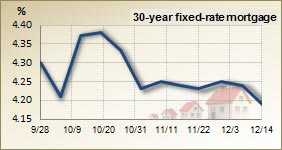

On the other hand, lenders make money from the interest you pay, so it’s not in their best interest to let homeowners stay on record-low rates for 20+ years either. This is for your benefit and the lender's, as you wouldn’t want to lock yourself into a record-high rate and then miss out on lower rates in the future. You’ll typically have the choice of fixing your home loan rate for between 1 and 5 years.

A fixed rate mortgage may offer more stability in your budgeting but you’ll likely find your options limited when it comes to flexibility in managing your loan.Ī home loan term is generally around 20-30 years, but your fixed rate period is usually much shorter. Remember to weigh the pros and cons of a fixed rate home loan against your financial situation and goals to determine whether it’s the right option for you.

And if you want to refinance your home loan and you've fixed your interest rate, you may have to pay break costs for ending the fixed rate period early. Variable rate home loans generally come with features such as an offset account or a redraw facility, which aren’t always available for fixed-rate loans. This may cause you to potentially miss out on lower mortgage repayments from a rate cut because you opted to fix your home loan.įurther, fixed rate mortgages may be more limited in their flexibility. However, if rates were to decrease, your mortgage repayments may be fixed at a higher rate. If rates were to rise during the fixed period, whether due to the cash rate lifting, or your lender hiking out-of-cycle with the RBA, your mortgage repayments will stay locked in. You may also be more immediately protected from interest rate fluctuations with a fixed rate home loan, which are likely to occur over a 20–30-year mortgage. Since the interest rate on your mortgage doesn’t change for the duration of the fixed term, it’s easier to plan your finances and budget, as you know how much your mortgage repayment will be each month. One of the main benefits of a fixed rate mortgage is predictability. Whether you’re a first home buyer or a long-time investor, if you meet the lender’s eligibility criteria, you may be able to apply for a fixed rate home loan. This is where interest is charged on part of your loan at a fixed rate, and on the remainder at a variable rate.įixed rate home loans are available for both owner-occupiers and investors. Homeowners can also choose both options, resulting in what’s known as a ‘split rate’ loan. During this fixed period, your interest rate, and therefore your home loan repayments, will not fluctuate.Ī variable rate is, however, subject to change as influenced by the Reserve Bank of Australia’s (RBA’s) cash rate, the Australian economy, and other factors affecting the mortgage lender. This interest may be charged at a fixed rate or at a variable rate.Ī fixed interest rate loan involves locking in a rate for a set period - typically 1 to 5 years. When repaying a mortgage, you will not only be paying off the loan amount (the principal), but you’ll also be charged interest on your home loan.


 0 kommentar(er)
0 kommentar(er)
